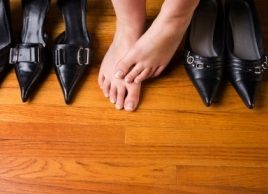Bunions
Feet hurting in those shoes? Bunions can be a killer.

Source: Adapted from Family Medical Adviser, Reader’s Digest
What are bunions?
A bunion is a harmless swelling of the joint between the base of the big toe and the first metatarsal bone. As the joint gradually swells, the skin becomes hard, red and tender. The big toe is then displaced towards the other toes.
Who is at risk for bunions?
Bunions are quite common in women aged between 40 and 60.
Treatment for bunions
‘ Self-treatment, chiropody or surgery will usually dispose of a bunion.
‘ Wear loose-fitting shoes and protect the bunion with felt pads.
‘ Regularly soak your feet in a hot foot bath containing grated ginger or Epsom salts.
If self-treatment fails to ease the discomfort or if the bunion becomes more inflamed and painful over time, seek medical advice.
A doctor may refer you to a chiropodist for bunion treatment or to hospital for surgery to remove the affected bone at the base of the big toe.
Complementary therapies
‘ Apply aloe vera gel to inflamed bunions.
‘ Supplements containing bromelain (an enzyme extracted from pineapple) or devil’s claw can help to reduce inflammation and the discomfort of joint pain due to bunions.
Living with bunions
It is important to note that complications may ensue. The base of the big toe can become inflamed and bursitis may develop. Bunions increase the risk of osteoarthritis in the affected joint.
Prevention of bunions
Ensure that shoes fit well. The feet of children, teenagers and young adults are more easily deformed than adults and are especially at risk of developing bunions from badly fitting shoes. If any swelling or inflammation appears on the big toe joint, protect it with felt pads.




